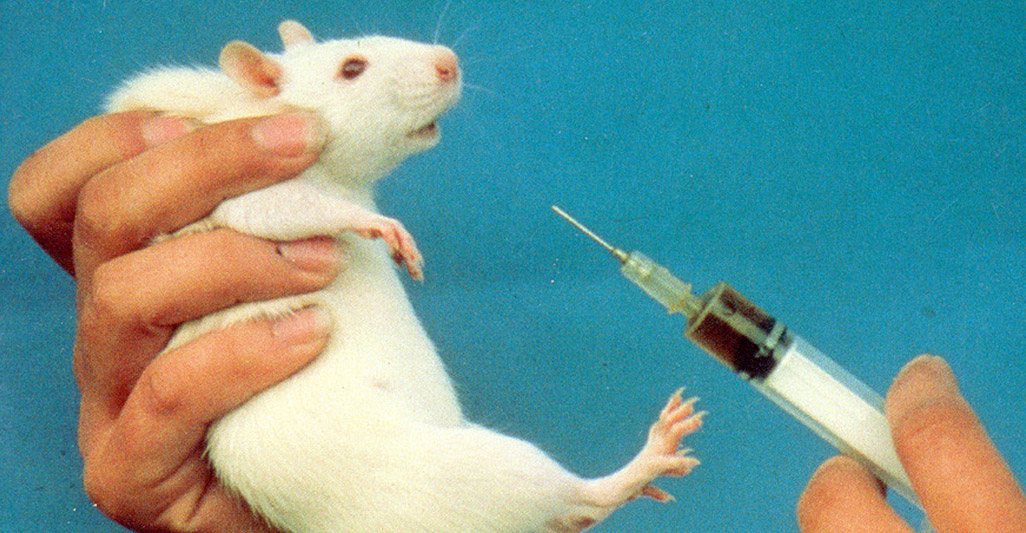One of the most common tests used to prove the toxicity of a given substance is called LD50 (Lethal Dose 50%), developed in 1927. The samples consists of 50-60 individuals, or more according to the needs of the researcher, who are force-fed with a substance to see how much of it is needed to kill half of the animals. Animals start to suffer from this poisoning and from the lack of the proper nutrients, presenting the following symptoms: vomit, diarrhoea, eye and mouth bleeding, convulsions, stifling. The researchers observe the animals while they die, taking notice of all the effects, and when 50% is dead, they proceed with the killing of the remaining half.
This experiment has never been scientifically validated and has no relation to the toxicity a substance could have on humans. Studies have been made, fostering the uselessness of the experiment, revealing that it has absolutely no value for any kind of application on human beings. LD50 test results depend on age, weigh, sex, species, room illumination, diet, health , and many other variables. Every animal species, man included, always reacts completely differently from other species.
Vivisection is misleading and harmful. It can delay important discoveries (e.g. foxglove alga) and allows in the market substances that were harmless for the tested animals in the laboratories, but that are then toxic for human beings causing undesired effects, theratogen effects (e.g. Thalidomide, still used in many poor countries), and iatrogenic effects (death provoked by medicines is the fifth cause of death in the States).
The pharmaceutical industry is a million dollar business: thousands of drugs enter the market every year, most of which are withdrawn because of their dangerous or lethal “side-effects”





